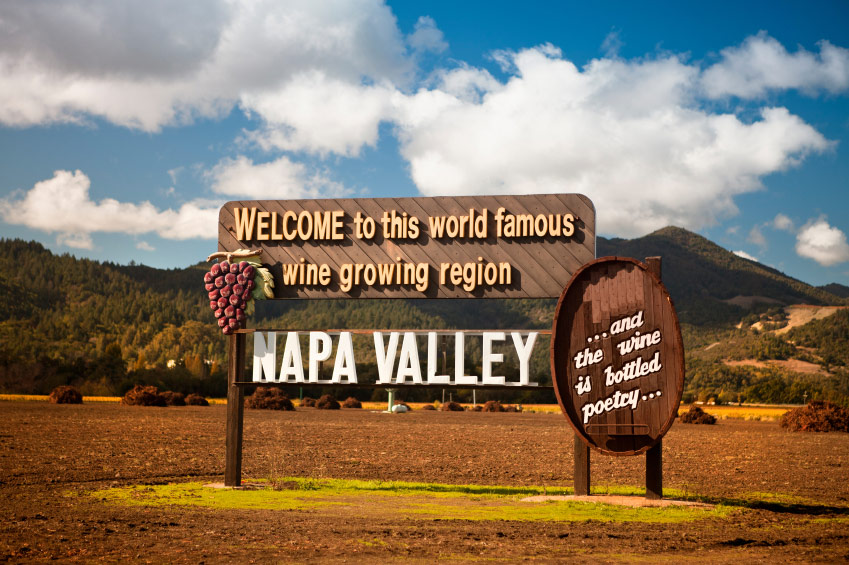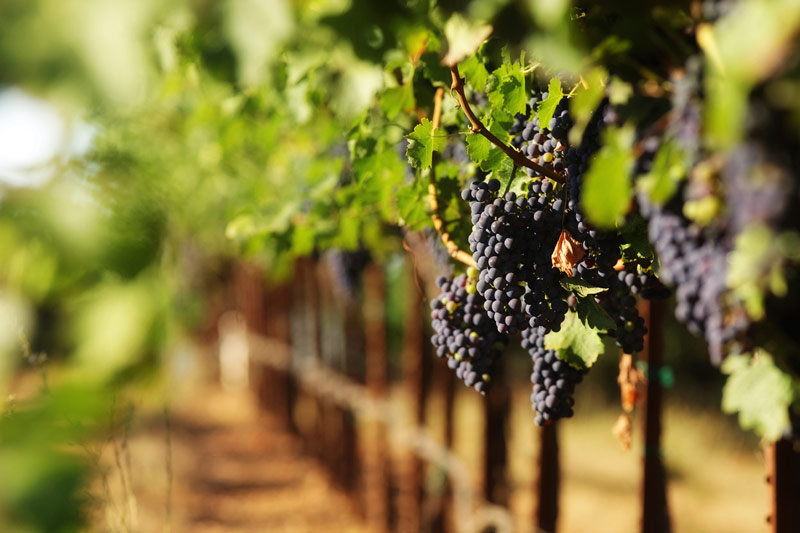Our Vineyards
Broken Rock Vineyard, Atlas Peak, Napa Valley
This 48-acre vineyard is located in Napa on the eastern ridge of the valley near Soda Canyon. Named for its strikingly rocky soil, wines from this region seem to have the best of mountainside structure with the ripe flavors from the valley floor. Planted at an extremely dense 2,000+ vines per acre, this vineyard produces incredibly concentrated wine with purple-black color and ripe, dark fruit aromatics. The Merlot is planted to low-yielding clones on low-vigor 3309 rootstock, producing small clusters due to slightly distressed soils. High drainage, northwest to southeast row orientation and low fertility soil aids to the production of intense, dense Merlot grapes.
Stagecoach Vineyard, Napa Valley
One of the largest, most beautiful and highly acclaimed vineyards we source from, Stagecoach climbs between 900 and 1700 feet up the southern face of Pritchard Hill to Atlas Peak. The site is planted to a wide range of varietals and rootstocks and features several distinct microclimates. Our Cabernet Franc is from a most sought after section – Block I, Clone 4 planted on 110 rootstock. This stretch of vines is lower-yielding than most of the vineyard thus giving explosive aromatics and rich fruit. Stagecoach Vineyard is rich in story, rock and perennial high scoring wines. Read more about Stagecoach Vineyard.
Sangiacomo Roberts Road Vineyard, Sonoma Coast
Planted in 1998 to the Pinot Noir and Chardonnay varietals, Roberts Road Vineyard produces the quintessential Sonoma Coast Chardonnay. Cool, coastal morning fog and wind burn away to warm afternoon sun. Its rocky soil northern edge bordered by Copeland Creek creates a strenuous growing environment for Chardonnay, producing structure and richness in the fruit. With 14 different clone and rootstock combinations, this Chardonnay is sure to impress. These wines are crisp, fruit-forward and full-bodied in structure. Read more about Sangiacomo Family Vineyards
Tourmaline Vineyard, Coombsville, Napa Valley
Coombsville is unique for its volcanic soils, its cooler-than-usual atmosphere and the bold red wines that result. East of the town of Napa, Tourmaline Vineyard, named after the birthstone of November, is cooled by the fog and breezes blowing off San Pablo Bay. This 65-acre site is planted to Bordeaux varietals on gently sloping terrain. The cooler climate allows for a nice long growing season, which often extends into November and produces a fleshy, opulent grape. The Merlot clusters here are smaller due to slightly distressed soils and lower precipitation totals in this section of Napa resulting in wines with deep ink-like hues.
Split Rock Vineyard, Sonoma Coast
Split Rock Vineyard is located within the larger Gap’s Crown Vineyard in the Sonoma Coast growing region on the west side of Sonoma Mountain. Its rocky soils combine with winds from the Petaluma Gap to create a challenging growing environment, but one that consistently produces great fruit. Most of the vineyard has optimal southwest exposure and is a very high density planting with over 2000 vines per acre. Chardonnay clones 95 and 76 from this cool climate vineyard blend to create a complex, complete wine with concentrated fruit and excellent natural acidity.
Catie’s Corner Vineyard, Russian River Valley
Catie’s Corner is located in the middle to slightly northern section of the famous Russian River Valley. Our small block of Viognier has a gently rolling profile with predominantly Huichica loam soil. One of the most important qualities about this site for Viognier is the consistent cycle of gentle warming and cooling each day, often the result of foggy mornings and evenings. This helps preserve the balance between attractive natural acidity and the opulent flavors typical of Viognier. This cycle of warming and cooling also leads to a lengthier period of ripening during which flavors and aromas can develop gradually and with greater depth and complexity. The Viognier at Catie’s Corner was budded onto existing rootstock in 1995.











